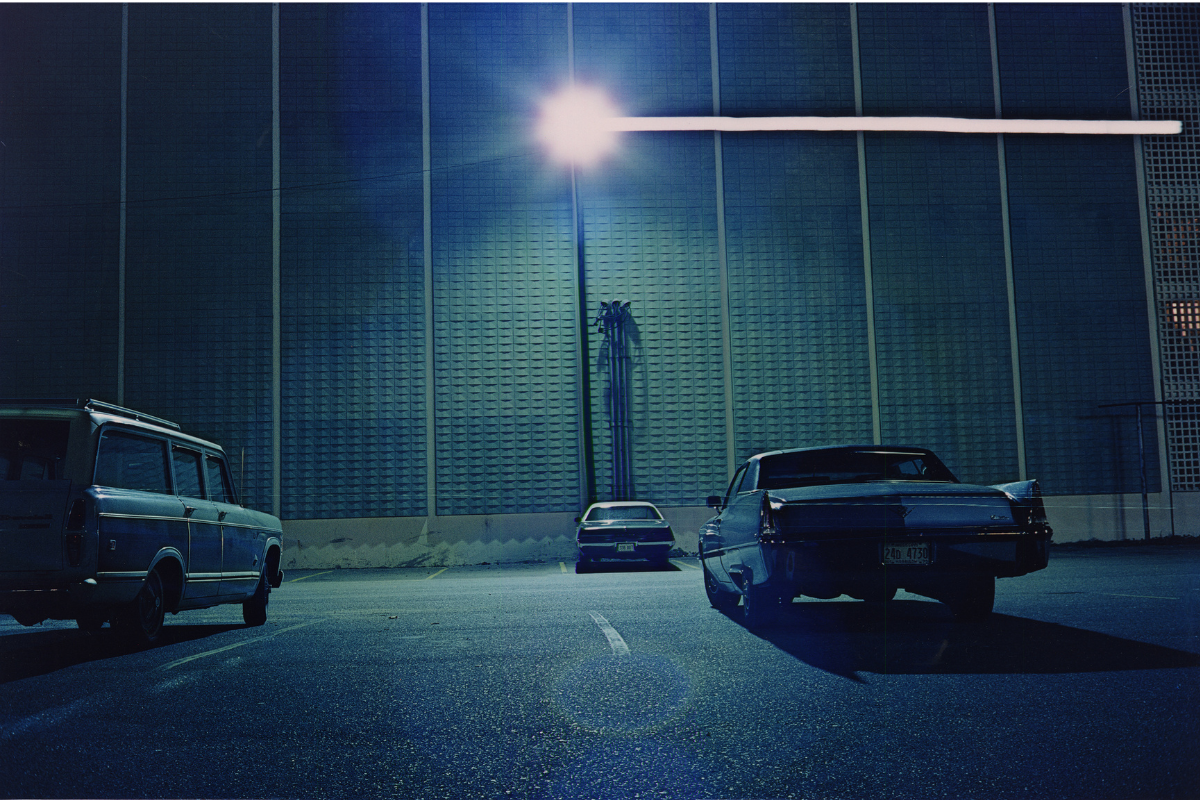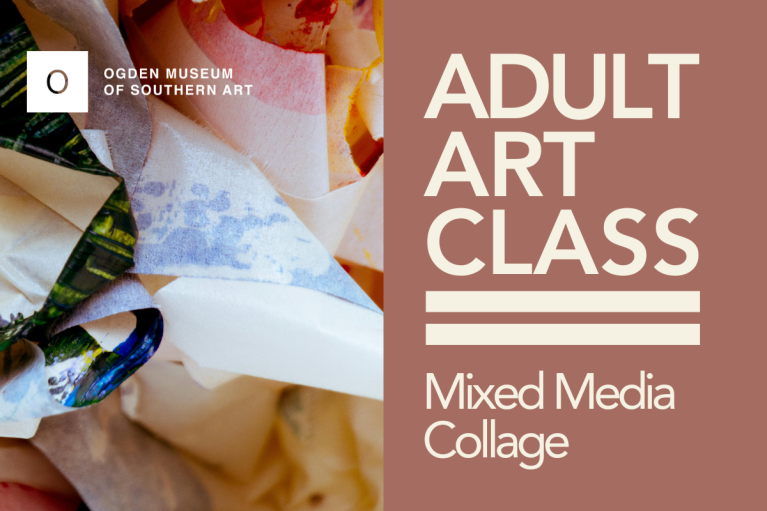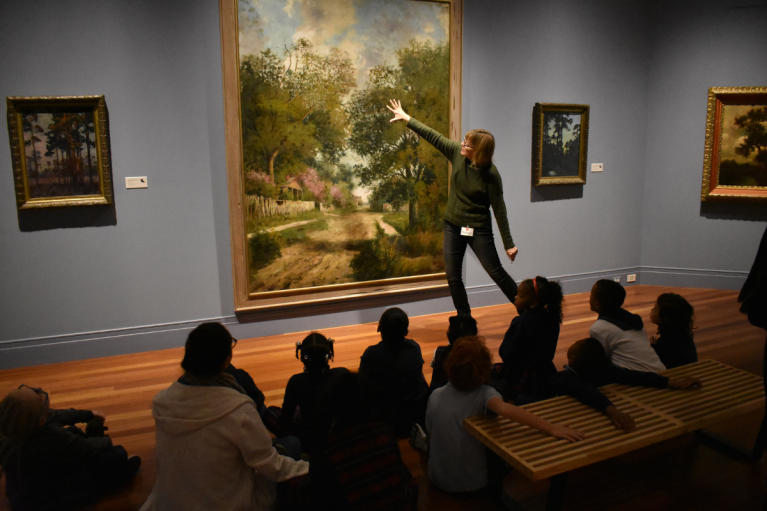
- This event has passed.

Gallery Talk Knowing Who We Are: Photography from 1940 to Present
/// December 15, 2023 @ 5:30 pm - 6:00 pm
Event Navigation
Enjoy extended museum hours as Richard McCabe, Curator of Photography, leads a walkthrough of the Museum’s current exhibition, Knowing Who We Are: Photography from 1940 to Present. This exhibition is part of the larger exhibition Knowing Who We Are: A 20th Anniversary Exhibition, which celebrates Ogden Museum’s 20th anniversary. McCabe will discuss the South’s role in shaping national and international trends within the photographic arts over the last 80 years.
Photographers included in the exhibition include: Clarence John Laughlin, Roland L. Freeman, Kael Alford, William Eggleston, Sally Mann, Keith Calhoun and Deborah Willis.
This Gallery Talk is free and open to the public. The talk will be followed by a reception and opening for CURRENTS and PhotoWALK, taking place from 7 to 9 p.m.
learn more about CURRENTSAbout Knowing Who We Are: Photography from 1940 to Present
The agrarian old South depicted in the depression-era photographs of photographers such as Walker Evans is all but gone. The modern “New South” is a region which is intrinsically tied to a global community. This exhibition follows the trajectory of documentary and fine art photographic traditions practiced in the American South from the 1940s to the present. These photographs represent diverse perspectives and experiments within the medium, and reflect the depth and complexity of the region.
As the South has changed socially, politically and economically, Southern photography has evolved to reflect the values of the region. The ways in which photographs are made, viewed and shared are in a constant state of reinvention. Throughout this technological evolution, remaining steadfast at the core of Southern photography is a strong storytelling tradition. The use of the camera to tell stories is the dominant thread that unites the photographs in Knowing Who We Are: Photography from 1940 to Present. Within the storytelling tradition, themes of identity, place, time, memory, family, myth and reality resonate as much today as in the past.
Evolving conceptual and aesthetic movements within Southern photography have both mirrored and influenced international trends. Beginning in the 1940s, the straight or objective photograph – a product of Modernism – dominated the medium. French-born Henri Cartier-Bresson photographed the American scene in meticulously composed geometric studies. Elemore Morgan Sr. documented industry, farming and the landscape of his rapidly changing Louisiana. In opposition to the straight photograph, Southern Gothic literature and the European Surrealist movement of the 1920s and 30s influenced Surrealism practiced by Southern photographers Clarence John Laughlin and Ralph Eugene Meatyard in the 1940s through 60s. Straight photography in the 1950s and 60s was infused with an amplified social consciousness informing the documentary tradition that captured the burgeoning civil rights movement sweeping across the South in the work of Gordon Parks, Ernest Withers and Roland L. Freeman.
The 1960s and 70s saw the rise of street photography to become the most popular form of fine art photography practiced worldwide. During this era, William Claxton, Michael P. Smith and Ralston Crawford photographed the lively street culture of New Orleans encapsulated within jazz funerals, second line parades and Mardi Gras. Memphis based photographer William Eggleston merged a street aesthetic with vivid color for his landmark 1976 Museum of Modern Art exhibition that ushered in the eventual acceptance of color photography as an art form equal to traditional black and white. In the 1980s and 90s the black and white photographs of Sally Mann marked a return to Romanticism and a focus on the lush beauty of the Southern landscape and intimacy of family.
The 1990s was a time of innovation in digital and computer imaging that changed photography forever. Digital processes soon overtook traditional film and darkroom processes that had dominated the medium since 1839. Digital and computer technologies also created access to photography for a much broader segment of society. The 2000s saw new voices emerge who combined elements of photojournalism and fine art photography to investigate the diverse racial and cultural landscape of the region. L. Kasimu Harris uses his camera as a tool of preservation while capturing the gentrification of Black spaces in New Orleans. Along Louisiana’s Gulf Coast, Kael Alford photographs the Native American communities on the front lines of climate change and rising sea levels. In rural Alabama, Michael Meads used the camera to document his community and to explore masculinity and sexuality in his Eastaboga series.
In 1940 photography was considered a marginalized art form. Today, photography rivals the popularity of painting and sculpture within the pantheon of fine art. Since Roger Ogden’s original donation of 600 works of art in 2003, Ogden Museum of Southern Art’s permanent collection of paintings, drawings, prints, sculpture and photographs has grown to more than 4,000 works acquired through the generosity of artists, patrons and collectors. Ogden Museum’s permanent collection of more than 1,500 photographs represents one of the most important and comprehensive collections of American Southern photography in the world.
Richard McCabe
Curator of Photography, Ogden Museum of Southern Art
/// Feature photo: William Eggleston, Blue Parking Lot, ND, Dye Transfer Print, 15.75 x 20 inches, On Loan from William Griener



